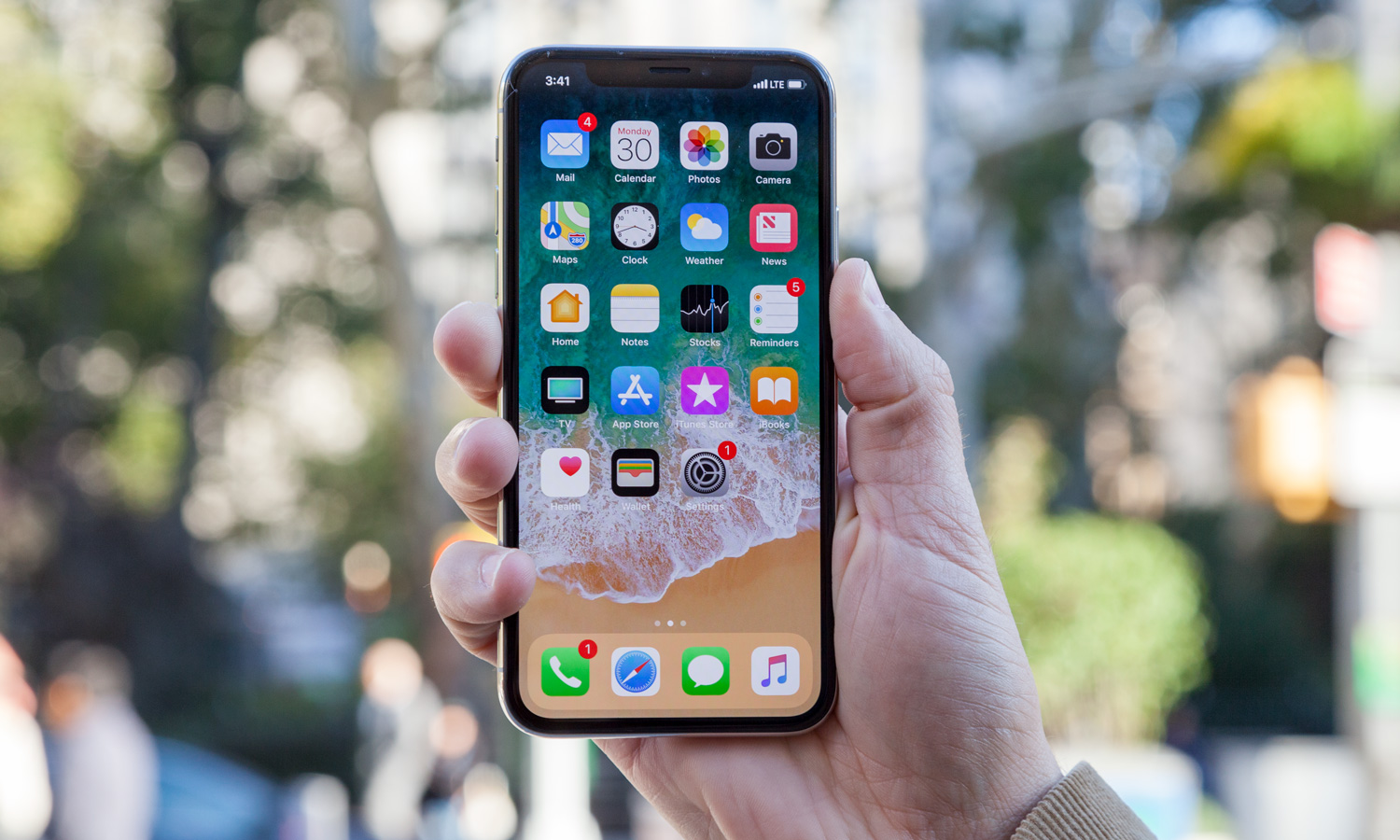iPhone X Soars While Galaxy S9 Struggles
The iPhone X is a big reason why Apple just enjoyed a record quarter. Don’t expect Apple to change course with this fall’s phones.
If you had any lingering doubt about what's driving Apple's iPhone business, let the company settle that for you: these days Apple is all about the iPhone X.

Apple today (July 31) reported revenue of $53.3 billion and earnings per share of $2.34 for its fiscal third quarter ended June 30. Those are both record numbers for company's June quarter, and iPhone sales were a big reason why.
Behind the Numbers
Apple sold 41.3 million phones from April to June, a modest bump from the 41 million sold during the same period in 2017. But iPhone revenue jumped 20 percent to $29.9 billion — a reflection of the higher price Apple's iPhones command ever since the $999 iPhone X debuted late last year.
In fact, as the Apple-centric Six Colors blog pointed out, Apple's four-quarter rolling iPhone revenue is at an all-time peak, beating out even that late 2015/early 2016 period when seemingly everyone was upgrading to an iPhone 6.
Apple's surging smartphone sales come at a time when its rivals are struggling to keep people interested in their high-end phones. On the same day Apple was announcing another strong quarter for its iPhone business, Samsung was conceding that sales of the Galaxy S9 and S9+ are slower than expected. Samsung's Galaxy Note 9 launch, slated for next month, reportedly had to be sped up because of the tepid S9 sales. Research firm IDC says that the iPhone is growing faster than the global smartphone market, according to Apple.
"The iPhone X shows that when you deliver great, innovative products, there's enough people that want that," Apple CEO Tim Cook told Wall Street analysts when asked about the health of the smartphone market. "It can be a great business."
Sign up to get the BEST of Tom's Guide direct to your inbox.
Get instant access to breaking news, the hottest reviews, great deals and helpful tips.
In other words, don't expect Apple to back off from a product strategy that's helping the company to grow its bottom line.
MORE: New iPhones: iPhone X2, iPhone X Plus and iPhone 9 Rumors
The Next iPhones
That's significant because we're rapidly approaching the fall window where Apple rolls out new iPhones. The company didn't address that directly in its earnings call today, other than to tell analysts to expect revenue to 16 to 19 percent in the September quarter (though that's likely going to be driven by the current iPhone lineup). All Cook would say is that Apple "couldn't be more excited by the products and services in our pipeline."
But Apple is reportedly betting big on the design and features it introduced with the iPhone X. Rumors suggest that all three phones Apple is working on for the fall will mimic the iPhone X's design and adapt features like Animoji and Face ID unlocking.
That's likely to come at the expense of a lower priced model like the iPhone SE, whose only mention during today's analyst call came when Apple executives lamented a tough year-over-year comparison for the company's 4-inch phone. (Apple doesn't break down sales by product, but the introduction of iPhone SE models with more memory in the June 2017 quarter likely meant Apple sold fewer of those phones this time around.)
Indeed, the entry-level 6.1-inch iPhone rumored for the fall is expected to cost only a little less than what an iPhone 8 goes for these days. But with Apple reaping the benefits of higher-priced iPhones — the average selling price of Apple's phones was $724 during the just-completed quarter — it's hard to argue with the company's strategy.
Services Booming
All those iPhone sales help Apple in another way — services like Apple Music, the App Store and elsewhere are booming. Revenue from services grew 31 percent during the June quarter to $9.5 billion. That came at a time when Apple says it saw double-digit growth in the number of active installed devices.
There were some blips on Apple's balance sheet for the quarter. Revenue from its Mac business fell 5 percent during a quarter where schools typically buy a lot of their computers due to some tricky timing on new models. (Apple's MacBook updates came out in the June quarter in 2017, but didn't land until July this year.) Apple's also keeping an eye on the trade war the Trump administration seems determined to wage with China. ("We're hoping that calm heads prevail," Cook said.)
Overall, though, Apple's outlook appears solid as it heads into one of the most important periods of its fiscal year. And it's the iPhone X that's shouldering much of the load.
Philip Michaels is a Managing Editor at Tom's Guide. He's been covering personal technology since 1999 and was in the building when Steve Jobs showed off the iPhone for the first time. He's been evaluating smartphones since that first iPhone debuted in 2007, and he's been following phone carriers and smartphone plans since 2015. He has strong opinions about Apple, the Oakland Athletics, old movies and proper butchery techniques. Follow him at @PhilipMichaels.

